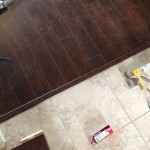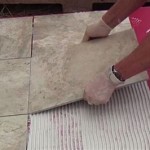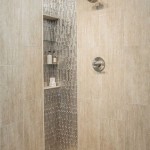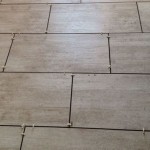Understanding the Cost of Laying Tiles
Laying tiles is a popular home improvement project, known for its durability, aesthetic appeal, and ease of maintenance. However, determining the overall cost of a tiling project can be complex, involving various factors beyond the price of the tiles themselves. This article provides a comprehensive guide to understanding the different elements that contribute to the cost of laying tiles, enabling informed decision-making and effective budgeting.
The total cost of a tiling project can be broadly divided into two categories: material costs and labor costs. Material costs include the price of the tiles, grout, adhesives, sealants, and any necessary underlayment or preparation materials. Labor costs cover the expenses associated with hiring a professional tiler, which can vary based on experience, location, and the complexity of the project.
Factors Influencing Material Costs
The type of tile chosen plays a significant role in determining the overall material cost. Ceramic tiles are generally the most affordable option, offering a wide range of styles and designs. Porcelain tiles, known for their durability and water resistance, typically cost more than ceramic tiles. Natural stone tiles, such as marble, granite, and slate, represent the higher end of the price spectrum, reflecting their unique aesthetics and inherent properties.
The size and quantity of tiles required also impact the material cost. Larger tiles often require fewer grout lines, creating a cleaner appearance, but they can be more expensive per tile. The amount of tile needed is determined by the area to be covered, plus an additional allowance for cuts and waste. It is generally recommended to purchase at least 10% more tile than the estimated area to account for breakage, mistakes, and future repairs.
Beyond the tiles themselves, other materials such as grout, adhesive, and sealant contribute to the overall material cost. The type of grout used depends on the type of tile and the intended application. Epoxy grout, for example, is more expensive than cement-based grout but offers superior stain resistance and durability. The adhesive used should be appropriate for the type of tile and the substrate to which it is being applied. Sealants are essential for protecting porous tiles and grout from moisture and stains, especially in wet areas like bathrooms and kitchens.
Substrate preparation is often an overlooked aspect of the tiling process, but it can significantly impact both the material and labor costs. If the existing surface is uneven, damaged, or unstable, it may require leveling, patching, or strengthening before tiling can begin. This may involve the use of self-leveling compounds, underlayment boards, or moisture barriers, all of which add to the material expenses. The condition of the existing subfloor or wall will largely dictate the level of preparation required.
Factors Impacting Labor Costs
Labor costs for tiling projects vary significantly based on the tiler's experience, location, and the complexity of the job. Highly experienced and skilled tilers typically charge higher rates, but they are also more likely to deliver superior results and avoid costly mistakes. Geographic location also plays a role, with labor rates generally higher in metropolitan areas or regions with a higher cost of living.
The complexity of the tiling project itself is a major determinant of labor costs. Simple, square or rectangular tiling patterns are generally less expensive to install than more intricate designs, such as herringbone, mosaic, or diagonal patterns. These complex patterns require more cutting, precision, and time, resulting in higher labor charges. Similarly, tiling around obstacles, such as pipes, fixtures, or corners, can increase the labor time and cost.
The size of the tiling area and the accessibility of the site also influence labor costs. Larger areas typically require more time and effort, leading to higher overall charges. Difficult access, such as tiling on upper floors without elevator access, or in confined spaces, can also increase labor costs. Tilers may charge extra for carrying materials up stairs or working in awkward positions.
Demolition and removal of existing tiles or flooring can also add to the labor costs. If the existing surface needs to be removed before tiling can begin, the tiler may charge an additional fee for this service. This includes the cost of removing the old tiles, disposing of the debris, and preparing the substrate for the new tiles.
Some tilers charge by the square foot, while others charge by the hour. A per-square-foot rate is often preferred for straightforward projects, as it provides a clear and predictable cost estimate. An hourly rate may be more appropriate for complex projects or when unforeseen issues arise during the installation process. It's crucial to get a detailed written estimate from multiple tilers before making a decision, outlining the scope of work, the materials to be used, and the total cost.
Hidden Costs and Considerations
In addition to the visible material and labor costs, there are often hidden expenses that can add to the overall project budget. These may include unexpected repairs to the substrate, changes in the scope of work, or unforeseen material shortages.
Contingency planning is crucial for managing potential hidden costs. Setting aside a buffer of 10-15% of the total budget can help cover unexpected expenses without derailing the project. It is also important to maintain open communication with the tiler throughout the project to address any issues or concerns promptly.
Proper ventilation is essential during the tiling process, especially when using adhesives, grouts, and sealants that can emit volatile organic compounds (VOCs). Ensure adequate ventilation by opening windows and doors or using fans to circulate air. This can help minimize the risk of respiratory irritation and other health problems.
Cleaning and sealing the tiles and grout after installation are essential for protecting the surface and prolonging its lifespan. Choose appropriate cleaning products that are specifically designed for the type of tile being used. Regular cleaning and sealing can help prevent stains, mildew, and other damage.
Permits may be required for certain tiling projects, especially in bathrooms or kitchens where plumbing or electrical work is involved. Check with the local building department to determine whether a permit is necessary and obtain the required permits before starting the project. Failure to obtain the appropriate permits can result in fines and delays.
Insurance is another important consideration when hiring a tiler. Ensure that the tiler has adequate liability insurance to cover any damages or injuries that may occur during the project. Ask for proof of insurance before hiring the tiler and verify that the policy is current.
Warranties are offered by some tilers and manufacturers, providing protection against defects in materials or workmanship. Review the warranty terms carefully to understand the coverage and limitations. A warranty can provide peace of mind and protect against potential problems down the road.
Selecting the right tiler is critical for a successful tiling project. Obtain multiple quotes from different tilers, check their references, and review their past work. Choose a tiler who is experienced, licensed (if required), and insured. A reputable tiler will be able to provide a detailed estimate, answer questions thoroughly, and communicate effectively throughout the project.
Proper maintenance is essential for extending the life of the tiled surface. Regular cleaning with appropriate cleaning products can help prevent stains, mildew, and other damage. Re-sealing the grout periodically can help protect it from moisture and stains. Avoid using abrasive cleaners or harsh chemicals that can damage the tile or grout.
By understanding the various factors that contribute to the cost of laying tiles, homeowners can make informed decisions, create realistic budgets, and ensure a successful tiling project. Careful planning, meticulous execution, and proper maintenance can transform a space with beautiful and durable tile work for years to come.

Floor Tiling Cost Guide 2025 How Much Does

How To Estimate The Cost Of Tiling A Room In 7 Steps

Tiles Flooring Cost Trenderior

What Is The Average Cost To Install Tile Floors Rubi Blog Usa

Kitchen Tile Installation Cost In Singapore 7 Types Of Tiles

Kitchen Tile Installation Cost In Singapore 7 Types Of Tiles

Understanding Tile Installation Cost Homestars

Tiling S In 2024 Request Your Quote Today

Floor Tiling Cost What Is The Of Laying Tiles In 2024

Cost Of Wall Tiling Rate Chart With Tiles And Labour Charges Houseyog
Related Posts








